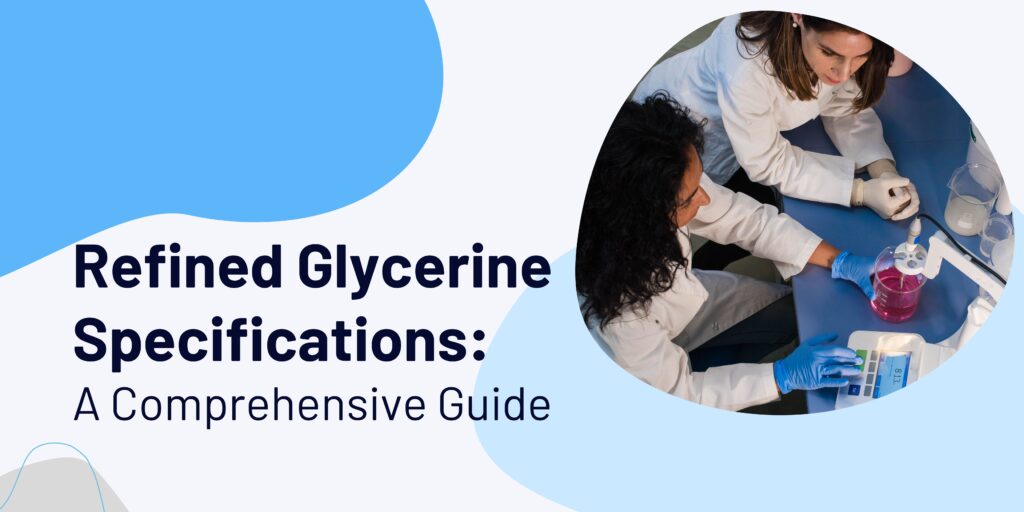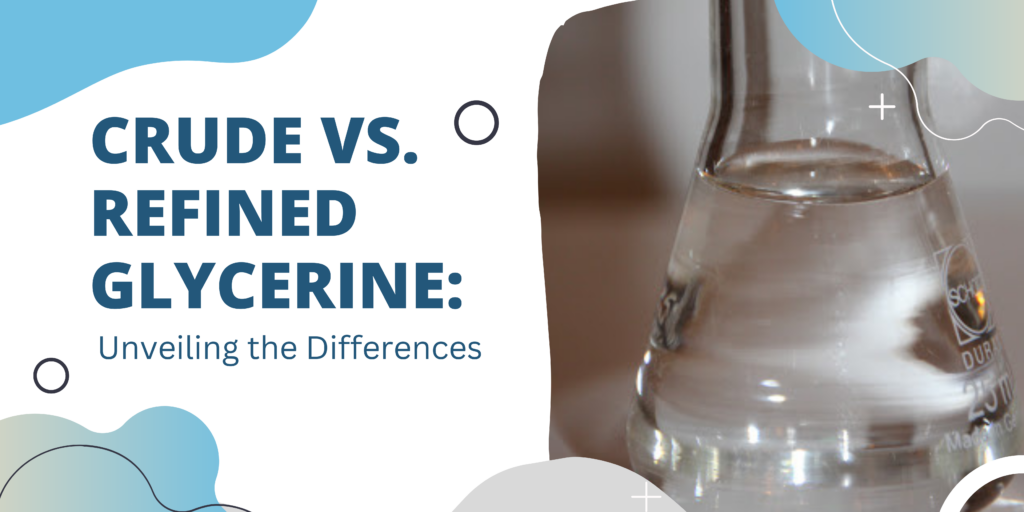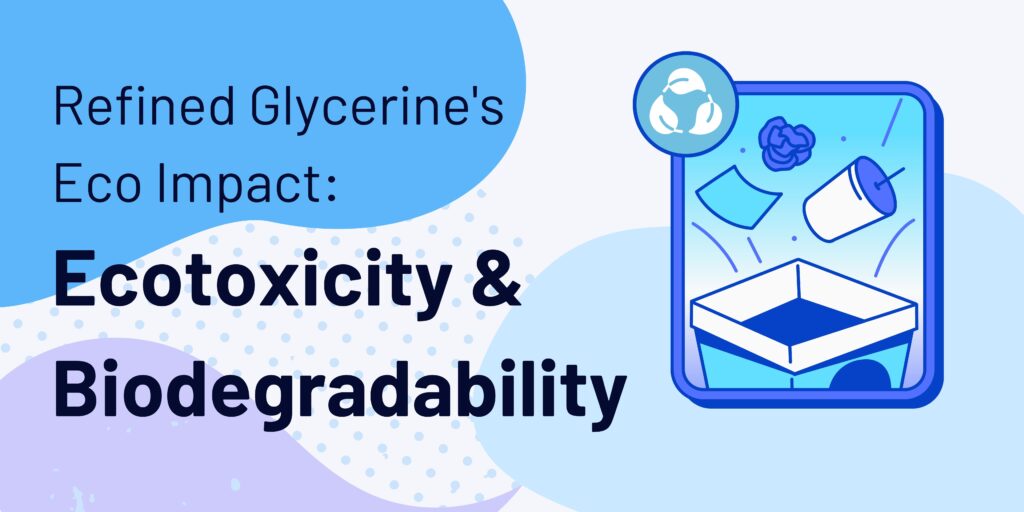
Refined glycerine, a versatile and widely used chemical compound, plays a crucial role in various industries, including pharmaceuticals, cosmetics, food, and more. The quality and performance of refined glycerine are closely tied to its specifications, which outline key characteristics and parameters. In this comprehensive guide, we will delve into the specifications of refined glycerine, shedding light on the critical factors that ensure its quality and suitability for different applications. Get the refined glycerine specifications for each grade and country of origin by downloading our TDS.
Chemical Composition
Refined glycerine, also known as glycerol, is a trihydric alcohol with the chemical formula C3H8O3. Its specifications begin with a clear definition of the minimum and maximum levels of purity required for different grades. Understanding the chemical composition is fundamental to comprehending the properties and functions of refined glycerine in various industrial applications, from pharmaceuticals to food and beyond.
Purity Levels
The purity of refined glycerine is a paramount specification. It is typically expressed as a percentage, with pharmaceutical and food-grade glycerine requiring higher purity levels than industrial grades. Common specifications may include a minimum purity of 99.5% for pharmaceutical use. The higher the purity, the fewer impurities that might interfere with the intended use of glycerine. Rigorous quality control in the production process is essential to meet these purity standards.
Moisture Content
Moisture content is a critical parameter, especially in applications where water can impact the stability of the end product. Specifications outline the maximum allowable moisture content, ensuring that the refined glycerine meets the desired quality standards. Excessive moisture can lead to microbial growth, affecting the shelf life and safety of products. Tight control over moisture content is imperative for industries such as pharmaceuticals and cosmetics.
Color
The color of refined glycerine can vary, and specifications often include color requirements expressed in terms of the Gardner color scale. Cosmetic and pharmaceutical applications may demand a colorless or pale-yellow appearance, while industrial applications may tolerate a wider range of colors. Color specifications are crucial for maintaining product aesthetics and visual appeal. Advanced refining processes are employed to achieve the desired color profiles.
Odor and Taste
Specifications also address the odor and taste of refined glycerine, particularly in industries such as pharmaceuticals and food. The compound should have a neutral odor and taste to avoid impacting the sensory attributes of the final product. Stringent odor and taste specifications are essential for applications where glycerine is a key ingredient, such as in the production of pharmaceutical syrups or food products. Specialized refining techniques are employed to achieve the desired sensory characteristics.
Fatty Acid Composition
Some refined glycerine specifications include limits on the presence of fatty acids. High-quality glycerine should have minimal levels of impurities like oleic, palmitic, and stearic acids. These specifications are critical for industries where the presence of specific fatty acids could affect the performance or stability of the end product. Precise control over refining processes ensures the removal of undesired fatty acid components.
Heavy Metal Content
To ensure the safety of refined glycerine, specifications often set limits on the concentration of heavy metals such as lead, arsenic, and mercury. These limits are crucial, especially in applications where glycerine comes into direct contact with the human body. Strict control of heavy metal content aligns with regulatory requirements and ensures product safety. Advanced testing methods are employed to detect and remove heavy metal impurities.
Chloride Content
The chloride content in refined glycerine is closely monitored to prevent corrosion in industrial processes. Specifications provide guidelines to maintain the chloride levels within acceptable limits. Controlling chloride content is particularly important in industries such as petrochemicals, where glycerine is used as a processing aid or additive. Stringent quality control measures are implemented to avoid adverse effects on equipment and processes.
Saponification Value
The saponification value is a measure of the average molecular weight of the fatty acids present in glycerine. Specifications may include a range for this value, helping users understand the composition of the glycerine. This parameter is valuable in industries like soap manufacturing, where the saponification value influences the soap’s characteristics and performance. Accurate testing and analysis are essential to determine and control the saponification value.
Conclusion
Understanding the specifications of refined glycerine is essential for manufacturers, formulators, and end-users alike. Adhering to these specifications ensures that the refined glycerine meets the required quality standards for its intended application, whether in pharmaceuticals, cosmetics, food, or industrial processes. As industries continue to evolve, the precise control of refined glycerine specifications becomes increasingly crucial for achieving optimal performance and meeting regulatory requirements. Attention to these specifications not only guarantees product quality but also contributes to the overall safety and sustainability of various industrial processes and consumer products. Rigorous adherence to these standards ensures that refined glycerine remains a reliable and versatile component across diverse industries.




